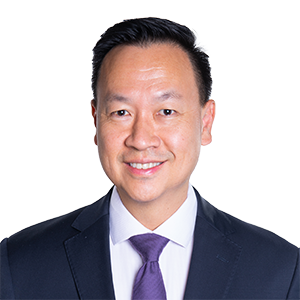On May 10, the Competition Commission of Singapore (CCS) published a market study report on formula milk supply to babies, infants and young children in Singapore. The CCS commenced its review of the formula milk market in October 2015 due to the sharp increase of formula milk prices in Singapore in recent years, a trend which had caused much concern amongst parents and couples seeking to start a family. The review was completed in December 2016.
The CCS reviewed the practices of six major formula milk manufacturers in Singapore. While the CCS concluded that the milk manufacturers had not engaged in any anticompetitive practices in the market, it highlighted several issues which had contributed to the sharp price increase of formula milk.
The CCS found that the increase in formula milk retail prices was mainly attributable to the increase in mark-up of wholesale prices over manufacturing costs of formula milk, including on raw materials, packaging and logistics. As local consumers’ (parents’) top three considerations in purchasing formula milk purchase are the brand name, nutrition and safety, formula milk manufacturers mainly compete on “premiumisation” – i.e. building a premium image for their formula milk products – through marketing activities and introducing new ingredients into the milk.
“Premiumisation” seeks to build up consumer brand loyalty, thereby strengthening consumer perceptions and entrenching their purchasing behavior. This strategy had a clear impact on the consumer market. The CCS found that consumers would generally only compare prices between two or three brands which met their requirements. Furthermore, the CCS noted that, in 2015, approximately 95 per cent of formula milk sales were premium and specialty milk with only around five per cent being standard (i.e. non-premium) milk. This gave major manufacturers the market power to increase the prices of formula milk.
To build a premium brand image, manufacturers invested heavily in marketing, research and development (with an increase of 42 per cent in total marketing expenditures between 2010 and 2014). The heavy cost of investment, coupled with strong consumer brand loyalty and customers’ preference of “premium” brands, were factors that were likely to have driven wholesale prices to increase at a faster rate than manufacturing costs of formula milk.
The CCS also noted that formula milk manufacturers prioritize non-price items, including product quality and innovation, over price competition.
As 70 per cent of parents using formula milk in private hospitals do not switch to a different milk brand after leaving the hospital unless there is a medical need, manufacturers invest heavily in marketing activities to hospitals (such as sponsorships, providing funding or support for medical education, product brochures and samples, supplying “ready-to-feed” (RTF) milk, and monetary contributions to private hospitals) so as to gain a “first-mover” advantage by having their formula milk placed on the hospitals’ milk rotation systems (whereby hospitals provide a “default” brand of formula milk to parents with no preference for a particular brand).
The CCS also found that many consumers do not have a sufficient understanding of the nutritional content of formula milk as well as the dietary requirements of babies, infants and young children. As such, many consumers wrongly believe that the more expensive or premium products are of higher quality. Some of the formula milk manufacturers therefore import their products from Europe, Australia and New Zealand so as to strengthen their products’ premium image. In turn, retailers (including supermarkets and pharmacies) endeavour to stock milk products according to consumers’ preferences and milk manufacturers’ marketing plans.
These factors posed significant barriers to entry and expansion for the formula milk market, thereby limiting the extent to which (smaller) existing brands and new brands could compete. A new formula milk manufacturer would find it challenging to devote significant resources to marketing and promotional activities to convince consumers of its product’s “premium” image within a short period of time. For instance, in 1998, an unbranded milk product from Italy failed to enter into the Singapore market due to consumers’ preferences for known and expensive brands which were presumed to be of higher quality and reliability.
The CCS also noted that the presence of parallel imports in the Singapore formula milk market is negligible. This could be due to the strict product labelling and import documentation requirements which parallel importers would have to comply with. As a result, the local supply of formula milk is mainly obtained from authorised distributors and there is a lack of alternative sources of supply. This limits intra-brand price competition in the market. The CCS concluded that the significant barriers to entry and limited price competition provided the major formula milk manufacturers the power to raise prices.
The CCS provided the following three broad recommendations with a view to providing consumers with more choices, lowering entry barriers in the market and increasing competition between formula milk manufacturers
- Assisting consumers to understand the choices of formula milk in the market by educating them on the nutritional content of formula milk, babies’, infants’ and young children’s nutritional requirements, allowing them to counter simple heuristics (such as “more expensive means better quality”) and improving their awareness of the availability of different formula milk products at different prices, including milk of standard brands which typically cost less than half of the premium brands’ prices and which also meet recognized safety standards and nutrient composition requirements.
- Encouraging intra-brand competition by reviewing parallel importation rules, subject to considerations of food safety and security, and inter-brand competition by encouraging the entry of new private labels into the market.
- Reducing barriers of entry and expansion for new and competing brands by reviewing formula milk manufacturers’ sponsorship and milk rotation programmes provided to hospitals.



